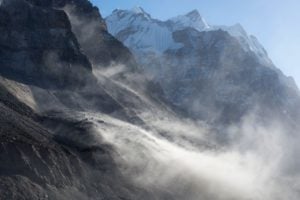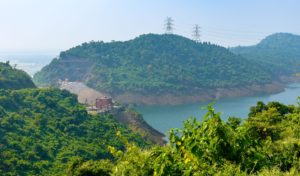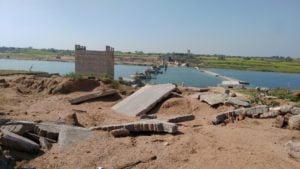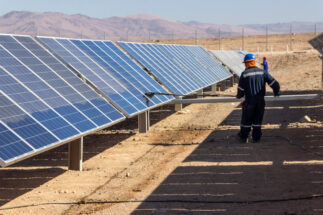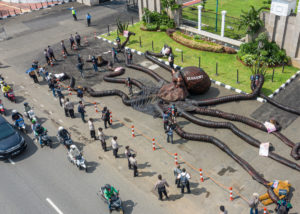Ten major rivers flow down from the Hindu Kush Himalayas and the Tibetan Plateau. Their basins cover most of Asia, serving more than two billion people. Each river basin is in different socio-ecological, cultural and political terrain, with numerous variations and problems for water governance. But the overall challenges of water resources management are similar.
In ‘Governing the “Water Tower of Asia”: The Case for a System of Integrated Knowledge for the Hindu Kush Himalaya’, Jayanta Bandyopadhyay and Sayanangshu Modak of the Observer Research Foundation tell us how to meet the challenges. The report calls for a complete overhaul of mindsets.
People in all 10 river basins face recurrent droughts and floods, increased pollution, dams and barrages fragmenting rivers, mining of riverbeds for sand and gravel, and degradation of riverine ecosystems.
Competing interests, conflict, water-energy-food demand, bad governance and poor institutional capacity add to complications of water management, especially when most of the rivers are transboundary.
In all the basins, Bandyopadhyay and Modak say the “availability of freshwater, both for ecosystem conservation and for meeting people’s needs, is facing a massive crisis”. As climate change worsens the situation, large human populations will be unable to adapt to heavy rains, floods, droughts, melting of ice, glacial lake outburst floods (GLOFs), excessive heat and sea level rise.
The authors show how the current water crisis is worsened by reductionist approaches to development and management that interpret water only as an economic good
The authors systematically describe physical, governance and integrative aspects of each basin. And they show how the current water crisis is worsened by reductionist approaches to development and management that interpret water only as an economic good, alongside the freewheeling of common resources.
Examples of such reductionism are manipulation of water bodies by storing and diverting water via dams, dikes or canals to maximise hydropower, irrigation, municipal and industrial supplies. There is no consideration of the inherent uncertainties of hydrology, meteorology, land-surface interaction and associated ecosystem services.
Such practices have undermined the diversity of social and management systems, leading to centralised agencies and market forces that seek to control water and push supply-driven solutions. The resultant loss of aquatic biodiversity, social displacement and loss of livelihood of downstream communities reliant on the river are unaccounted and the burden is shifted to future generations.
System of Integrated Knowledge
The authors show a way out, which they call the System of Integrated Knowledge (SINK). They start with the concept of Integrated Water Resources Management (IWRM), first proposed in the 1992 Dublin Conference on Water.
This conference adopted principles that recognised freshwater as a finite and vulnerable resource with social and economic value. It called for the comprehensive management of water using a river basin as the unit for planning and development by including participatory approaches and placing women as key actors in domestic water management.
In 2000, the Global Water Partnership defined IWRM as a “process that promotes the coordinated development and management of water, land and related resources to maximise the resultant economic and social welfare equitably without compromising the sustainability of vital ecosystems”.
Problems of implementing Integrated Water Resources Management
Despite the global recognition of the need to integrate economic efficiency, equity and ecological sustainability to overcome crises, there are very few successful examples of IWRM in practice. The authors’ reference to a case of IWRM implementation in Nepal highlights how a reductionist perspective functions against the application of IWRM.
In 2002, the government of Nepal received support from the World Bank to formulate a water resources strategy following the principle of IWRM. This evolved into a National Water Plan in 2005. In 2009, Nepal’s ministry of water resources was split into the ministries of energy and irrigation for political reasons. This automatically fragmented and diminished the IWRM agenda. Senior officials in the two ministries implied that Nepal need not espouse IWRM because the ministries would work within separate boundaries.
In many cases, a centralised water bureaucracy tends to usurp the responsibility for ‘integration’. But disconnect between the users and the governing bodies continues. So does the disconnect between official agencies. This perpetuates water crises and worsens the provision of water-based services to large sections of the population.
In many cases, a centralised water bureaucracy tends to usurp the responsibility for ‘integration’. But disconnect between the users and the governing bodies continues
Bandyopadhyay and Modak reinforce the critique of IWRM as a broad construct, a concept that does not yet have empirical evidence to support its practical utility, and for being politically neutral. All water development interventions and technologies that control the movement of water above and below ground and management decisions are always deployed in contexts of social inequality, conflict, cooperation, exchange and power, as pointed out by experts during the 1995 Chennai conference on the political economy of water in South Asia.
The four variables that define a river
The authors propose that the multi-faceted nature of a river must be the starting point for attempts at integration. Rivers have four fundamental variables with a synergetic relationship: water quantity (including quality), energy, biodiversity and sediments (WEBS). Unfortunately, mostly water quantity and energy are the focus of the reductionist water management perspectives while neglecting biodiversity and sediment. Displacement, loss of livelihoods, degradation of natural resources and riverine ecosystems remain the accepted norms of ‘development’.
The authors argue that the concept of WEBS can help guide the development of SINK, drawing on natural and social sciences, including indigenous/local/traditional practices. They contend that such a system could lead to a more holistic approach to water, balancing its multiple uses. According to the authors, integration of such knowledge should happen at all three levels: primary, secondary and tertiary. Developing higher-education curricula according to these principles and sensitising policymakers remain major undertakings, they point out.
Bandyopadhyay and Modak dedicate the publication to the memory of Ghanshyam Raturi (1934-1997), an environmental activist and poet from Uttarakhand. Across the river basins of the third pole, many activists, writers and poets have challenged the status quo and the reductionist approach, offering a vision of the future in harmony with nature, rivers and other beings. Today, though access to the internet has expanded, the space for civic engagement and ways for different sections of society to talk to each other has diminished.
Only a new institutional framework for management and deliberative democracy can help balance power and competing interests with socio-ecological accountability
Fostering dialogue on various aspects of water challenges and solutions in these basins would be useful in creating the new system for water knowledge, or what the authors call SINK. It requires unravelling the inherent structure of decision-making and education that today produce, apply and reinforce reductionist knowledge on water management.
Only a new institutional framework for management and deliberative democracy can help balance power and competing interests with socio-ecological accountability.
‘Governing the “Water Tower of Asia”’ is a useful publication for coming generations and professionals. Specifically, it must be included as a source material in water resource education in basin countries.
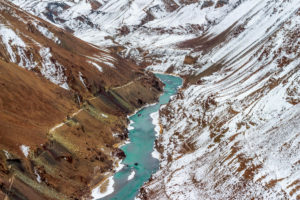
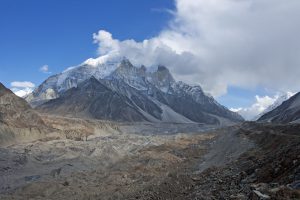
![vehicles stranded due to a landslide atop a road being widened under the Char Dham Project [Image by Hemant Dhyani]](https://dialogue.earth/content/uploads/2020/08/CDP-Landslide-Hemant-Dhyani-300x201.jpg)
